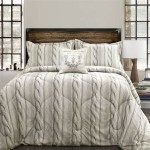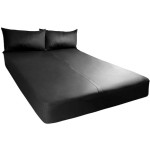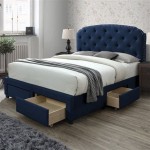Standard Twin Size Bed Dimensions
Understanding standard twin bed dimensions is crucial for making informed decisions regarding bedroom furniture, bedding, and room layout. This article provides a comprehensive overview of standard twin bed dimensions, covering common variations and offering guidance for space planning.
The standard twin bed, also known as a single bed, is the smallest standard bed size readily available. Its dimensions are 38 inches wide by 75 inches long. This consistent sizing allows for easy comparison across manufacturers and simplifies the process of selecting appropriate bed linens and accessories.
While the length and width of standard twin beds remain constant, the height of the mattress can vary considerably. This variation stems from differences in mattress construction and materials. Common mattress heights range from 6 inches for thinner, more basic models to upwards of 18 inches for thicker, pillow-top, or luxury mattresses. The height of the bed frame itself can also influence the overall bed height.
Understanding the total height of the bed, including the mattress and frame, is vital for selecting suitable bedding, such as fitted sheets and bed skirts. It is also important to consider ceiling height and other furniture placement when evaluating the impact of bed height on the overall room aesthetic and functionality.
Beyond the standard twin, there exists an alternative known as the twin XL. This longer version maintains the standard 38-inch width but extends the length to 80 inches. This additional 5 inches in length makes the twin XL a popular choice for taller individuals or those who prefer more legroom.
The increased length of the twin XL, while beneficial for comfort, requires specific bedding. Standard twin sheets will not fit a twin XL mattress. Therefore, it is imperative to purchase sheets specifically designed for twin XL beds to ensure a proper fit.
When planning bedroom furniture arrangement, accurate measurements are essential. A standard twin bed requires a space of at least 38 inches by 75 inches. However, this only accounts for the bed itself. Additional space should be factored in for comfortable movement around the bed, access to closets and drawers, and other furniture pieces.
Designers and homeowners typically recommend allowing a minimum of 2 feet of clearance on each side and at the foot of the bed for comfortable navigation. This additional space also facilitates the ease of making the bed and moving around the bedroom without feeling cramped.
For smaller bedrooms or rooms accommodating multiple beds, such as children's rooms or guest rooms, bunk beds or loft beds utilizing twin size mattresses offer practical space-saving solutions. These configurations maximize vertical space while maintaining comfortable sleeping arrangements.
When selecting a bunk bed or loft bed, careful consideration should be given to the overall height of the structure. Ensuring sufficient headroom between the top bunk and the ceiling is crucial for safety and comfort. Manufacturers typically provide detailed height specifications for these types of beds.
Choosing the right bed size involves more than just considering the dimensions of the mattress. The overall size of the room, the placement of other furniture, and the needs of the individual using the bed are all critical factors to consider.
For children transitioning from a crib to a larger bed, the standard twin often serves as an ideal stepping stone. Its compact size provides a sense of security while offering ample space for growth. However, the twin XL may be a more suitable long-term investment for rapidly growing children.
In guest rooms, the standard twin bed provides a practical and space-efficient solution for accommodating individual guests. Its smaller footprint allows for greater flexibility in room arrangement and can accommodate additional furniture pieces if needed.
For individuals living in studio apartments or smaller spaces, the standard twin bed offers a comfortable sleeping solution without overwhelming the room. Its compact size maximizes floor space, leaving room for other essential furniture.
Understanding the standard twin bed dimensions empowers consumers to make informed decisions about their bedroom furniture purchases. By considering the various factors outlined in this article, individuals can select the appropriate bed size and create a comfortable and functional bedroom environment.
Furthermore, understanding the distinction between the standard twin and the twin XL ensures that individuals purchase the correct size bedding and avoid potential fitting issues. This knowledge streamlines the shopping process and contributes to a more satisfying overall purchase experience.
In conclusion, accurate knowledge of standard twin bed dimensions is an invaluable tool for anyone furnishing a bedroom. This understanding facilitates efficient space planning, informed purchasing decisions, and the creation of a comfortable and functional sleeping environment tailored to individual needs and preferences.

Twin Bed Size Dimensions Mattress Guide Nectar Sleep

Twin Xl Mattress And Size Bed Dimensions Eachnight

Decoding Mattress Sizes And Dimensions Ncoa Org

Mattress Sizes Chart And Bed Dimensions Guide Amerisleep

Mattress Size Chart Dimensions Guide My Slumber Yard

Mattress Sizes And Bed Dimensions For Room Size Needs Eachnight

Bed Sizes Guide Curtain Of Maine

Mattress Sizes And Dimensions Guide

Mattress Size Charts Dimensions Guide Advisor

Bed Sizes And Dimensions Guide Eachnight







